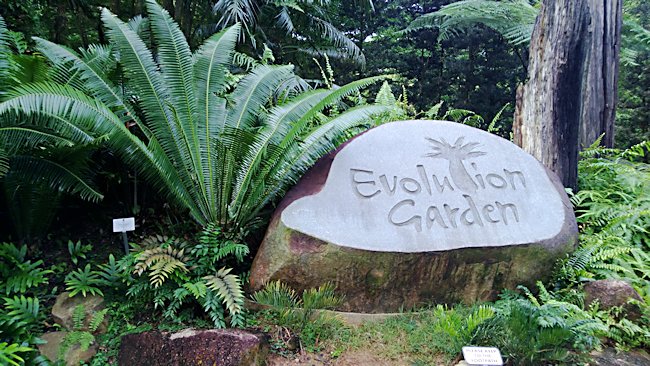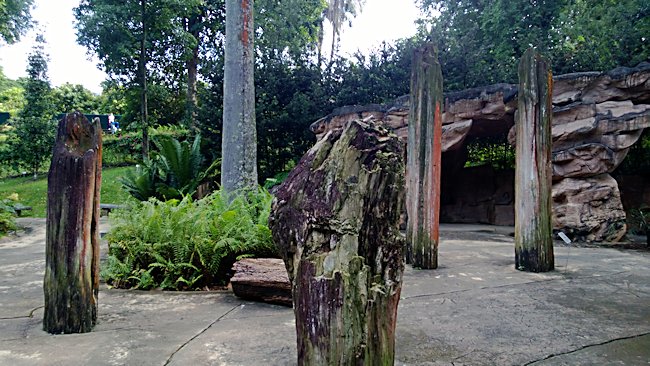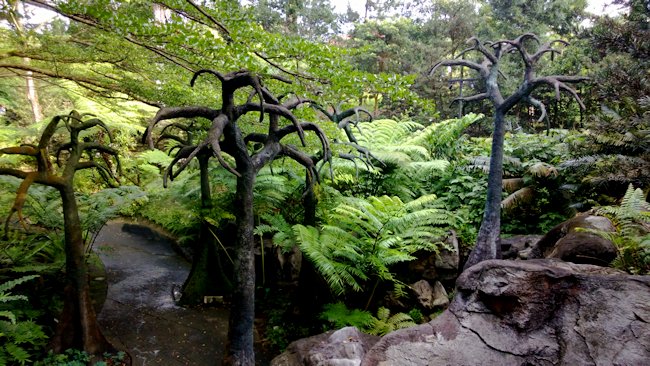Evolution Garden in Singapore's Botanical Gardens
One section of the Singapore botanical Gardens, that you must not miss is the evolution garden, especially if you have children with you. The designer has tried, very successfully, to show the history and development of plants across the planet.

You take this journey through time by following a corkscrew of a path which starts at the top of the hill. The beginning is marked by a large boulder the words "Evolution garden" chiseled into it. It is near fine examples of fossilised tree trunks. They look like normal trunks, but the wood has been turned into stone.
The construction and planting of this garden is a very clever move. Many schools teach the development of life and this is an ideal venue to brings groups of schoolchildren to so they can see first hand examples of the plants mentioned their school books. This part of the botanical Gardens is free to visit. But obviously the more visitors but come the more they spend in the restaurants and gift shops.
All botanical gardens around the world should have their own version of an evolution garden. This one is first class. It helps that it is situated in the tropics and therefore does not need a greenhouse to protect the delicate plant species

How do trees become petrified? In the ancient forests trees would suddenly become covered in mud or volcanic ash due to a natural disaster. Some of the trees remain standing upright whilst others are knocked to the ground. Over millions of years, the organic material, wood, is replaced with minerals such as quartz and silicates.
The shape and structure of the tree remains intact. The wood initially does not rot because when it is first buried there is no oxygen in the sediments that cover it. Water containing minerals in solution seep through the sediments and saturates the wood. Over the years the wood decays but the now solid minerals but the water is deposited remains in the shape of the tree.

Petrified tree trunks become exposed when the sediments that they are encased in are eroded. They can be found in many places around the world from Yellowstone National Park to South America, Africa, Australia, New Zealand, India, Europe, and China. Many are found along the paths of rivers or on beaches due to old cliffs and riverbanks being worn away by water.
Travel books

